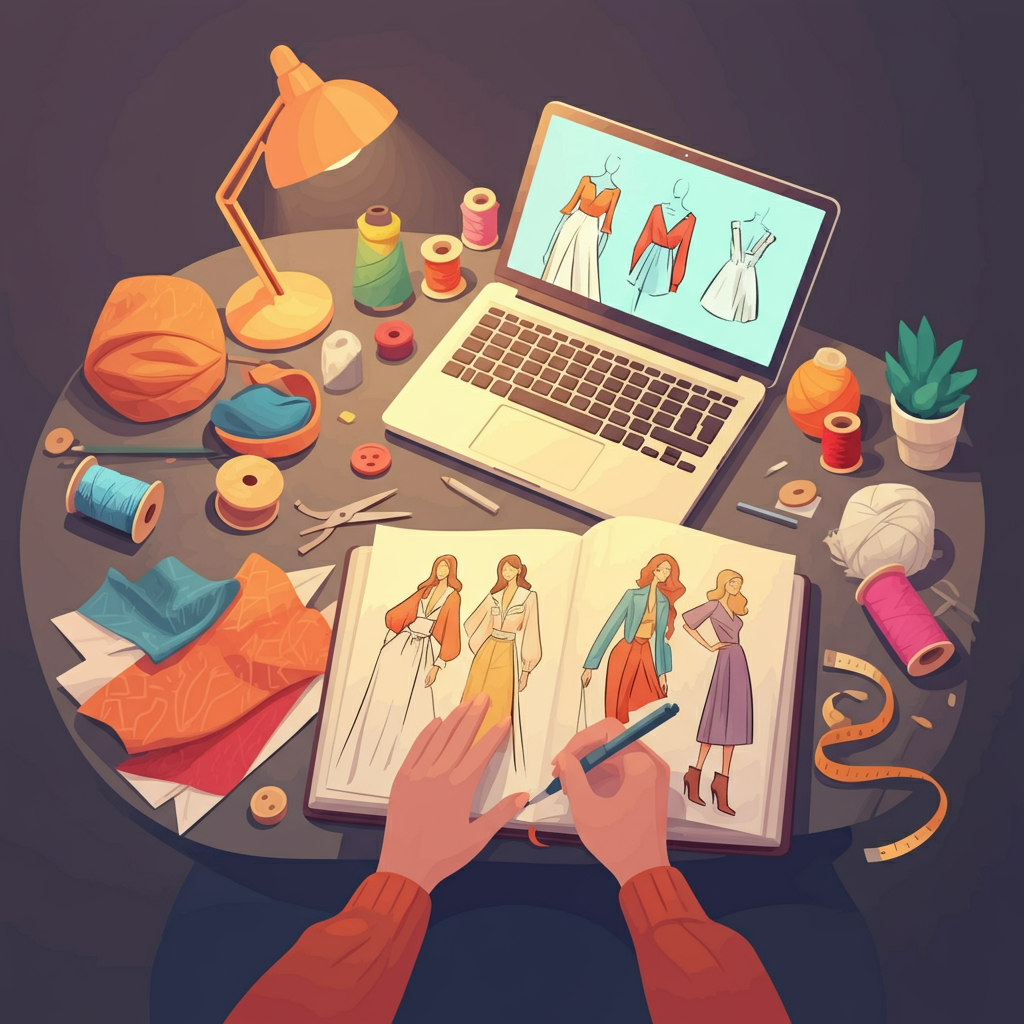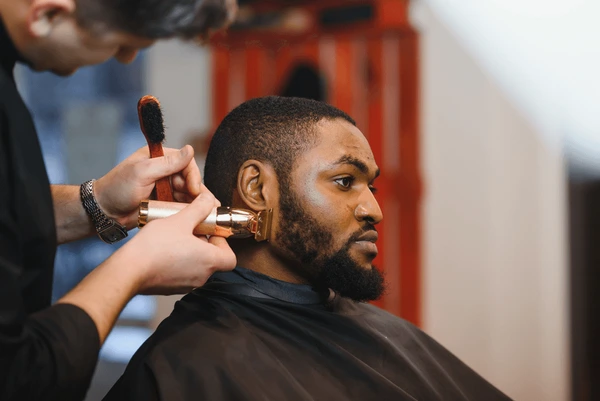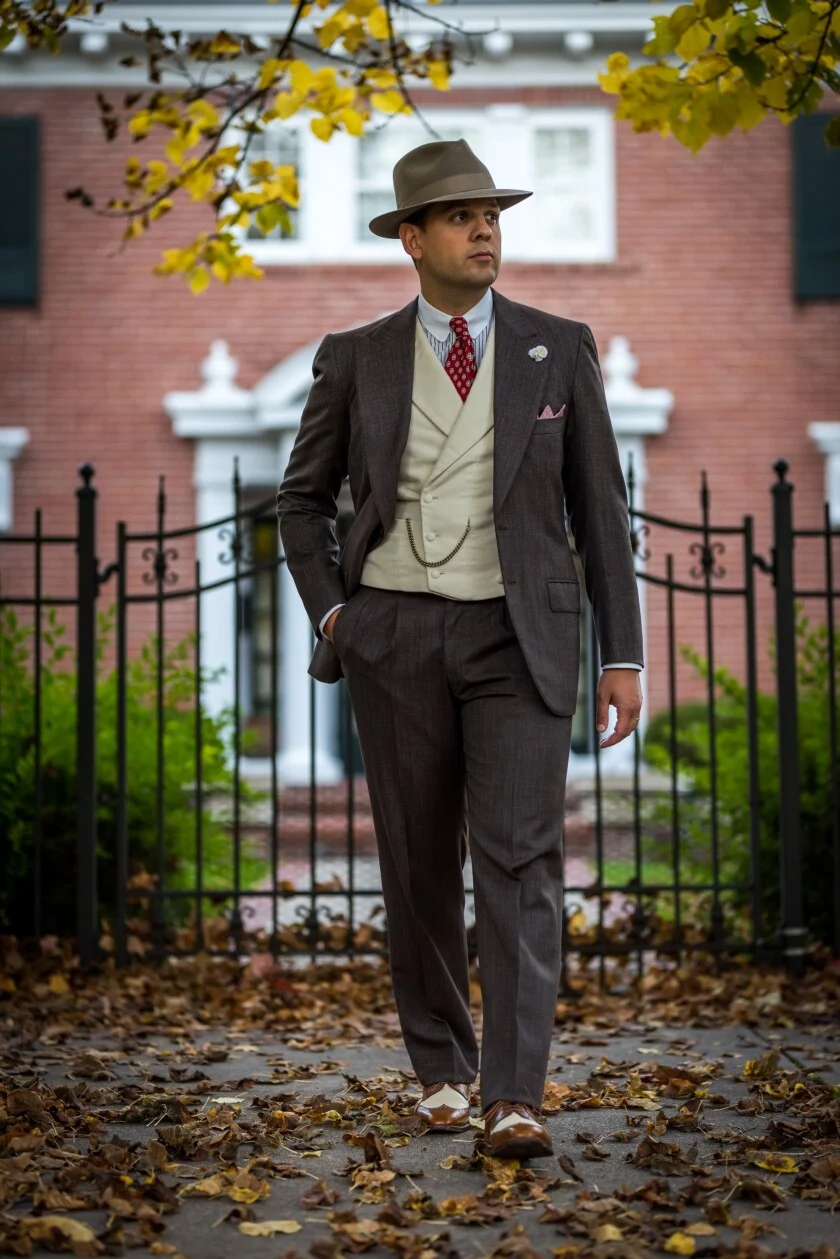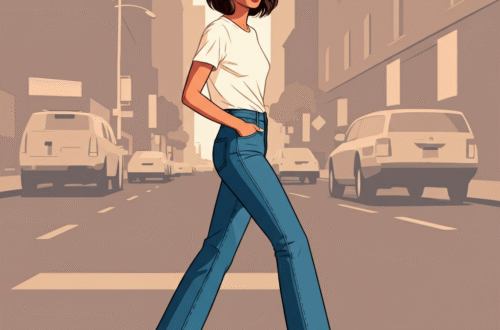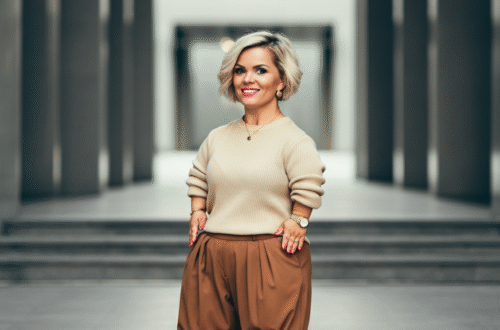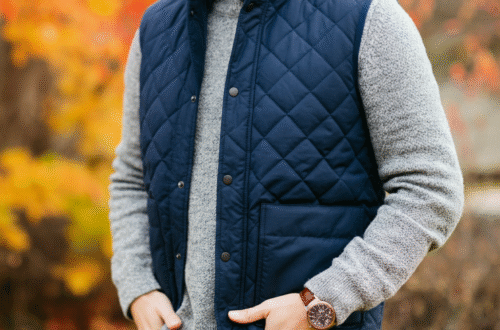Fashion storytelling is one of the most captivating forms of creative writing. Whether you’re crafting a novel about a designer’s rise to fame, a short story set during Fashion Week, or a tale exploring the cultural impact of clothing, fashion stories offer endless possibilities. The fashion industry provides a rich backdrop filled with glamour, creativity, competition, and human drama that makes for compelling narratives.
In this comprehensive guide, we’ll explore everything you need to know about writing fashion stories that captivate readers and bring the world of style to life. From character development to setting authentic scenes, you’ll discover the essential elements that make fashion fiction truly shine.
Understanding the Fashion Story Genre
Fashion stories encompass a broad range of narratives that center around clothing, style, design, and the fashion industry. These stories can take many forms, from romance novels set in fashion houses to thriller stories involving fashion espionage. The key is understanding that fashion serves as more than just a backdrop – it becomes an integral part of your narrative structure.
When you write a story about fashion, you’re dealing with a world where appearance matters, creativity flows, and personal expression takes center stage. Fashion stories often explore themes of identity, self-expression, ambition, and the price of beauty. They can be set in any era, from historical pieces about Victorian dress to futuristic tales about technological fashion innovations.
The fashion industry itself provides natural conflict and tension. Competition between designers, the pressure of seasonal collections, the fast-paced nature of trends, and the hierarchy within fashion houses all create excellent story opportunities. Your characters might be struggling designers, ambitious models, powerful editors, or fashion influencers navigating social media fame.
Remember that fashion stories appeal to readers who love style, but they also attract those interested in human drama, business intrigue, and creative processes. This broad appeal makes fashion fiction a versatile and marketable genre.
Developing Compelling Fashion Characters
Creating authentic fashion characters requires understanding the various roles within the industry. Your protagonist could be a fashion designer with a unique vision, a model breaking barriers, a fashion journalist uncovering scandals, or a stylist working with celebrities. Each role comes with specific challenges, motivations, and professional pressures.
Fashion designers make natural protagonists because they embody creativity and vision. They face constant pressure to innovate while meeting commercial demands. A designer character might struggle with artistic integrity versus commercial success, deal with creative blocks, or fight to establish their brand in a competitive market. Their backstory could include fashion school experiences, early career struggles, or inspiration from family traditions.
Model characters offer opportunities to explore themes of beauty standards, body image, and the temporary nature of physical careers. A model protagonist might be dealing with aging in a youth-focused industry, competing for major campaigns, or transitioning into other fashion roles. Their stories can address serious issues like eating disorders, exploitation, or the mental health challenges that come with public scrutiny.
Fashion editors and journalists provide insider perspectives on the industry. These characters can uncover scandals, make or break careers with their reviews, and navigate the politics of fashion media. They might struggle with ethical dilemmas, such as whether to expose a beloved designer’s questionable practices or how to maintain objectivity when personal relationships are involved.
Character Development Tips:
- Give your characters specific fashion specialties (evening wear, sustainable fashion, street style)
- Create realistic professional backgrounds with proper industry knowledge
- Develop personal style signatures that reflect their personalities
- Include fashion mentors, rivals, and collaborative relationships
- Show how fashion choices reflect emotional states and character growth
Researching the Fashion Industry
Thorough research is crucial for writing authentic fashion stories. The fashion world has its own language, customs, and unwritten rules that you must understand to create believable narratives. Start by learning fashion terminology – from basic garment construction terms to industry jargon used in different fashion capitals.
Study fashion history to understand how styles evolved and what social forces influenced changes in fashion. Historical knowledge helps you write period pieces accurately and understand why certain fashion movements emerged. For example, understanding how World War II rationing affected fashion design can inform stories set during that era.
Read fashion magazines, blogs, and industry publications to stay current with contemporary fashion culture. Publications like Vogue, Harper’s Bazaar, and industry trade magazines provide insights into current trends, business practices, and industry personalities. Fashion blogs and social media accounts offer perspectives on street style and emerging designers.
Watch fashion documentaries and behind-the-scenes content to understand the creative process. Films like “The September Issue” and “Dior and I” show the intense work that goes into fashion magazines and collections. Fashion Week coverage reveals the pressure and excitement of seasonal shows.
Visit fashion museums and exhibitions when possible. Museums like the Metropolitan Museum of Art’s Costume Institute offer deep insights into fashion history and cultural significance. These experiences help you understand fabric textures, construction techniques, and the artistry involved in fashion creation.
Research Resources:
- Fashion History Museums and Archives
- Industry Trade Publications (WWD, BOF)
- Designer Biographies and Memoirs
- Fashion Week Documentation
- Social Media Fashion Communities
- Fashion School Curricula and Courses
Creating Authentic Fashion Settings
Fashion settings go beyond just describing beautiful locations – they must feel authentic and serve your story’s needs. Different fashion capitals have distinct personalities and industry focuses. Paris represents haute couture and timeless elegance, Milan focuses on luxury and craftsmanship, New York embodies commercial fashion and innovation, and London celebrates avant-garde and emerging talent.
Fashion Week settings require understanding the chaos, excitement, and pressure of these events. Shows happen back-to-back in various venues, from traditional runway spaces to unconventional locations like warehouses or outdoor spaces. The backstage atmosphere is frantic, with models, makeup artists, stylists, and designers working under intense time pressure.
Design studios and ateliers offer intimate settings where creativity happens daily. These spaces reflect their occupants’ aesthetic sensibilities and working methods. A haute couture atelier might feature traditional tools and techniques, while a contemporary designer’s studio could showcase modern technology and sustainable practices.
Fashion magazines and media companies provide settings rich with office politics and creative collaboration. These environments blend traditional media structures with digital innovation. Fashion closets filled with samples, photo studios with elaborate setups, and editorial meetings where trends are debated all offer dramatic possibilities.
Retail environments from luxury boutiques to fast fashion stores each have their own atmospheres and customer dynamics. Fashion schools provide academic settings where future industry professionals learn their crafts and form lasting relationships.
According to truefashionstory.com, understanding these authentic settings helps readers immerse themselves fully in fashion narratives and creates more believable story worlds.
Mastering Fashion Terminology and Language
Fashion has its own rich vocabulary that varies by specialty area, geographic region, and historical period. Learning this terminology is essential for writing convincing fashion stories. Basic garment construction terms include silhouette, drape, bias, seaming, and finishing techniques. Understanding these terms helps you describe clothing accurately and show your characters’ expertise.
Industry jargon differs between sectors. Fashion design terms include mood boards, color stories, tech packs, and fittings. Modeling terminology covers castings, go-sees, editorial versus commercial work, and different types of modeling jobs. Fashion journalism uses terms like trend forecasting, market analysis, and editorial calendar planning.
Fabric knowledge is particularly important for fashion writing. Different textiles behave uniquely, have specific care requirements, and convey different messages about quality and price point. Silk drapes differently than cotton, wool has seasonal associations, and synthetic fabrics offer different performance characteristics.
Color terminology in fashion goes beyond basic color names. Fashion uses seasonal color palettes, understands color psychology, and employs specific systems for categorizing and communicating colors across the supply chain. Terms like “colorway,” “pantone matching,” and “color blocking” appear regularly in fashion contexts.
Essential Fashion Vocabulary Categories:
- Garment Construction: Seaming, darts, pleats, gathering, interfacing
- Fabric Types: Natural fibers, synthetics, blends, performance fabrics
- Silhouettes: A-line, empire, sheath, fit-and-flare, oversized
- Industry Processes: Sourcing, production, merchandising, buying
- Style Elements: Proportions, scale, texture, pattern, embellishment
Writing Compelling Fashion Scenes
Fashion scenes require vivid sensory details that help readers experience the tactile and visual aspects of clothing and style. Don’t just describe what characters wear – show how fabrics feel, how garments move with the body, and how clothing affects confidence and behavior. A silk dress might whisper against skin, while denim provides structural support and casual confidence.
Fitting scenes offer opportunities for character development and conflict. These intimate moments reveal insecurities, aspirations, and relationships between characters. A designer fitting a client might discover personal details that influence the garment’s design, or tension might arise when a piece doesn’t fit as expected.
Fashion show scenes are dramatic high points that combine spectacle with professional stakes. Describe the backstage energy, the precision of model choreography, and the audience’s reactions. Show how lighting affects fabric appearance and how music enhances the collection’s mood. Include technical details like runway timing and the seamless coordination required for successful shows.
Shopping scenes can reveal character personalities and relationships. How characters approach shopping – whether they’re impulsive or methodical, budget-conscious or extravagant – tells readers about their values and backgrounds. Shopping with others creates opportunities for conflict or bonding.
Styling scenes show the creative process of putting looks together. Professional stylists consider body types, occasions, color palettes, and personal style preferences. These scenes can demonstrate expertise while advancing character development and plot.
Scene Writing Techniques:
- Use specific fabric and texture descriptions
- Include sensory details beyond just visual elements
- Show emotional connections to clothing and style choices
- Incorporate professional techniques and industry knowledge
- Balance fashion details with character development and plot advancement
Exploring Fashion Themes and Conflicts
Fashion stories naturally incorporate themes of identity, self-expression, and personal transformation. Clothing choices reflect internal states and character development. A character’s evolving style can mirror their emotional journey, professional growth, or changing relationships.
The tension between art and commerce provides rich conflict material. Designers might struggle between creative vision and market demands, while fashion magazines balance editorial integrity with advertiser expectations. Characters might face decisions about compromising artistic principles for financial success.
Social and cultural themes emerge naturally in fashion contexts. Stories can explore cultural appropriation, sustainable fashion practices, body positivity, diversity and inclusion, and fashion’s environmental impact. These contemporary issues provide relevant conflict while addressing important social topics.
Generational differences in fashion create natural tension between characters. Established fashion professionals might resist new trends or technologies, while younger characters push for innovation and change. Family fashion businesses often feature conflicts between tradition and modernization.
The fast-paced, competitive nature of fashion creates deadline pressure and professional rivalries. Characters might compete for the same opportunities, deal with fashion week stress, or navigate industry politics and power dynamics.
Building Fashion Story Plots
Fashion story plots can follow various structures depending on your chosen subgenre and themes. Competition-based plots might center around fashion competitions, awards, or rival designers vying for the same opportunities. These stories build natural tension and clear stakes while showcasing different design philosophies and approaches.
Rise-to-success plots follow characters climbing fashion industry hierarchies. These stories can explore the sacrifices required for success, the challenges of maintaining authenticity while gaining recognition, and the personal costs of professional achievement. They often include mentor relationships and industry gatekeepers.
Fashion mystery plots combine style with suspense. Characters might investigate fashion industry crimes, uncover scandals, or solve puzzles related to fashion history or valuable garments. These stories can explore fashion’s connections to art, history, and international commerce.
Romance plots in fashion settings benefit from the industry’s glamorous backdrop and opportunities for meaningful connections. Characters might meet at fashion events, collaborate on creative projects, or find love despite professional competition. Fashion provides natural obstacles and opportunities for romantic development.
Transformation plots use fashion as a vehicle for personal change. Characters might discover their style identity, overcome insecurities through fashion, or use clothing to navigate life changes. These stories often explore themes of self-acceptance and authentic self-expression.
|
Plot Type |
Key Elements |
Natural Conflicts |
Character Arcs |
|---|---|---|---|
|
Competition |
Rivals, judges, stakes |
Creative differences, time pressure |
Growth through challenge |
|
Rise-to-Success |
Mentors, obstacles, goals |
Artistic vs. commercial demands |
Professional development |
|
Mystery/Thriller |
Secrets, investigation, danger |
Hidden motives, industry politics |
Truth-seeking journey |
|
Romance |
Attraction, obstacles, resolution |
Professional rivalry, different goals |
Emotional vulnerability |
|
Transformation |
Identity crisis, growth, discovery |
Self-doubt, external pressure |
Personal authenticity |
Character Development Through Fashion
Fashion choices reveal character personalities, backgrounds, and internal states more effectively than lengthy descriptions. A character who always wears black might be going through grief, trying to appear sophisticated, or following minimalist principles. Someone who mixes vintage pieces with contemporary items might value sustainability, have historical interests, or enjoy creative expression.
Professional fashion characters develop expertise that influences their worldview. A textile designer thinks about fabric properties and manufacturing processes. A fashion buyer considers market trends and consumer behavior. A fashion historian sees clothing as cultural artifacts with social significance.
Character growth can be reflected through evolving style choices. A shy character might gain confidence and begin wearing bolder colors or more fitted clothing. Someone recovering from trauma might slowly reintroduce items they once avoided. Career changes often coincide with wardrobe evolution.
Fashion characters often have signature looks or style philosophies that define their professional identities. These signatures help readers remember characters and understand their approaches to fashion. However, characters should also show flexibility and growth rather than remaining static in their style choices.
Character Development Techniques:
- Style Evolution: Show character growth through changing fashion choices
- Professional Expertise: Demonstrate industry knowledge through character actions
- Personal Signature: Give characters distinctive style elements
- Emotional Expression: Use clothing to convey internal states
- Cultural Background: Incorporate heritage and upbringing into style choices
Writing Fashion Dialogue Authentically
Fashion professionals speak with industry-specific vocabulary while discussing technical and creative aspects of their work. However, avoid overwhelming readers with jargon that interrupts story flow. Characters should sound knowledgeable without being inaccessible to general audiences.
Different fashion roles have distinct communication styles. Designers might speak passionately about inspiration and creative vision. Fashion editors use precise language when discussing editorial concepts. Models discuss their work in terms of bookings, agencies, and portfolio development.
Fashion critique requires specific vocabulary for discussing design elements, construction quality, and aesthetic merit. Characters providing fashion commentary should demonstrate knowledge while remaining engaging for readers. Show expertise through specific observations rather than generic praise or criticism.
Business conversations in fashion contexts cover production timelines, budget constraints, market analysis, and strategic planning. These discussions can reveal character motivations and industry pressures while advancing plot development.
Creative conversations explore inspiration sources, design processes, and artistic vision. These exchanges can be deeply personal as characters share their creative thoughts and professional dreams.
Dialogue Writing Tips:
- Balance industry terminology with accessible language
- Show character expertise through specific observations
- Use fashion discussions to reveal character relationships
- Include emotional subtext in professional conversations
- Vary dialogue style based on character roles and backgrounds
Incorporating Current Fashion Trends
Contemporary fashion stories should reflect current industry trends and cultural movements. However, avoid focusing too heavily on specific trends that might quickly become dated. Instead, incorporate broader movements like sustainability, digital fashion, and inclusive design that have lasting significance.
Social media’s impact on fashion provides relevant contemporary context. Characters might be fashion influencers, deal with online criticism, or navigate the pressure of constant content creation. These elements reflect current industry realities while creating relatable conflicts.
Technology integration in fashion offers interesting plot possibilities. Characters might work with 3D design software, develop wearable technology, or explore virtual fashion experiences. These elements can differentiate your story while reflecting industry innovation.
Sustainability consciousness affects contemporary fashion characters’ decisions and values. Characters might prioritize ethical production, work with sustainable materials, or address fashion waste issues. These themes provide conflict opportunities while addressing important contemporary concerns.
Global fashion perspectives reflect the industry’s international nature and diverse cultural influences. Characters from different fashion capitals bring unique perspectives and approaches to their work.
Research Tools and Resources for Fashion Writers
Online Fashion Resources:
- Fashion industry publications and websites
- Designer and brand official websites
- Fashion week live streams and archives
- Fashion museum online collections
- Social media fashion communities and hashtags
Books and Publications:
- Fashion history and theory books
- Designer biographies and memoirs
- Fashion business and industry analysis
- Style guides and fashion reference materials
- Academic fashion and textile research
Educational Opportunities:
- Fashion design and merchandising courses
- Industry workshops and seminars
- Fashion week attendance (in person or virtual)
- Museum exhibitions and fashion shows
- Fashion documentary and film viewing
Networking and Interview Sources:
- Fashion professionals willing to share insights
- Fashion school alumni and current students
- Industry association meetings and events
- Fashion blogger and influencer communities
- Retail and manufacturing professionals
Key Takeaways
Writing compelling fashion stories requires balancing industry authenticity with engaging storytelling. Successful fashion fiction combines thorough research with creative imagination, using the fashion world as more than just an attractive backdrop. Characters should feel genuine and professionally knowledgeable while remaining relatable to general audiences.
Fashion stories offer unique opportunities to explore themes of creativity, identity, competition, and personal transformation. The industry’s natural drama and visual appeal provide rich material for various genres and plot structures. Whether you’re writing romance, thriller, literary fiction, or contemporary drama, fashion contexts enhance storytelling possibilities.
Remember that fashion evolves constantly, so staying current with industry trends and cultural movements helps keep your stories relevant and engaging. However, focus on timeless human themes and universal conflicts that transcend specific fashion moments.
Authentic dialogue, detailed settings, and well-researched industry practices elevate fashion fiction from superficial glamour to meaningful storytelling. Readers appreciate writers who respect both the fashion industry and their intelligence, creating stories that entertain while offering genuine insights into fashion culture.
Frequently Asked Questions
Q: Do I need fashion industry experience to write fashion stories?
A: While personal experience helps, thorough research and genuine interest in fashion can compensate for lack of direct industry experience. Many successful fashion fiction writers developed their knowledge through dedicated research and consultation with industry professionals.
Q: How much fashion detail should I include without boring readers?
A: Balance fashion details with story pacing and character development. Include enough specific information to create authenticity, but don’t let technical details overwhelm narrative flow. Use fashion elements to advance plot and reveal character rather than simply describing clothing.
Q: What fashion story subgenres are most popular with readers?
A: Fashion romance, contemporary fiction with fashion settings, and fashion industry thrillers tend to perform well. However, reader interest depends more on compelling characters and engaging plots than specific subgenres.
Q: How do I avoid making my fashion characters seem superficial?
A: Give characters depth beyond their fashion interests. Include personal struggles, complex relationships, and meaningful goals that extend beyond clothing and style. Show how fashion connects to larger themes of identity, creativity, and personal expression.
Q: Should I focus on high fashion or include more accessible fashion elements?
A: Consider your target audience and story themes. High fashion provides glamour and drama, while accessible fashion elements help readers relate to characters and situations. Many successful fashion stories include both elements.
Q: How do I research fashion industry practices accurately?
A: Combine multiple research methods including industry publications, documentaries, professional interviews, fashion school resources, and direct observation when possible. Cross-reference information from multiple sources to ensure accuracy.
